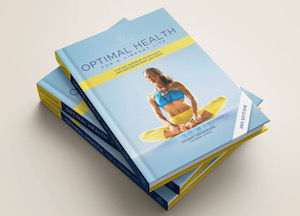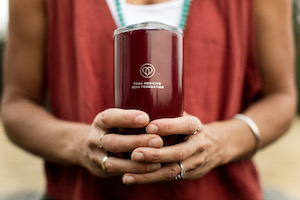Articles, In the Press, Myofascial Release, Resources, Share Your Story, Yin, Restorative and Meditation, Yoga Medicine® News
Fertility – The Elephant in the Room
Lisa McCabe shares her personal story on fertility alongside some useful tools on how yoga teachers can offer support for those experiencing fertility issues.
According to the dictionary, the term fertility translates as ‘a person’s ability to conceive’. Essentially, all women have the ability to conceive so why is it easier for some than it is for others?
In the UK, 1 in 7 couples (approximately 3.5 million) will have trouble conceiving and in the US, infertility affects approximately 10% of women (about 6.1million). These numbers highlight that infertility is not uncommon which suggest that more people experience fertility issues than we realize. So, why is it such a taboo subject and why do so many people search at length to find support in this personal process? In this piece, I will share part of my own story alongside some useful tools on how yoga teachers can offer support.
Why is conceiving easy for some but challenging for others?
In actual fact, the subject of fertility is actually quite grey. No one really knows why some men and women are able to have children and some struggle. Is it nature, genetics, or just bad luck?
Infertility can affect first-time mamas and there is an increasing number of women who had no issues getting pregnant first time around but have struggled when trying to conceive thereafter. Same-sex couples and single women are also part of this group and the necessity of a sperm and/or egg donor leaves only handful of options: conception, insemination, in-vitro fertilization (IVF), or surrogacy.
A Journey Into IVF
I was 30 when we decided to start a family. After bringing home our first fur-baby, we felt the timing was perfect to add a real baby to the mix, but I had no idea of the path that lay before us. Soon after, I became a fertility patient who spent seven years visiting an assisted reproductive unit.
After months turned into a year, we were advised to seek further investigations that began with routine blood tests, sperm tests, laparoscopy, and a hysteroscopy to reveal there was nothing fundamentally wrong. We learned that I have a significant amount of endometriosis, a condition that causes the lining of your womb to shed and deposit in other areas of the abdominal cavity. This is commonly a very painful condition; however, I had never experienced pain or discomfort so was completely unaware. My consultant believed my endometriosis was a result of my yoga practice and the regular acupuncture sessions I was having.
The adventure continued and yet nothing, so we took the plunge and decided our best option was IVF. This is not an easy or inexpensive decision. It took around a year to achieve our first round as it is all meticulously planned around cycles.
The Unanticipated Side Effects of Infertility
The Assumptions
It’s funny now that I think back, on the surface I appeared to be coping well with my situation. I channeled my energy into reading, practicing, and anything that felt positive; but deep down I wasn’t coping at all. I told only close friends and family as I didn’t want people to judge; but regardless of what I shared, they always assumed the problem lies with your partner.
The most troubling fact was that we were never given a straight answer on why we were ‘struggling’.
The Unsolicited Advice
It seems as soon you reach a certain age or get married people feel they have the right to ask, ‘when are you going to have kids?’ or ‘you’re getting on, don’t leave it any longer!’ Little do they know your struggle or your heartache. And, on the flip-side, I have many friends who have made the conscious decision not to have children which also deserves respect.
The Invisible Burden
Initially, I churned out the same story, ‘oh we will but not right now.’ Then one day, I decided to confront it head on. I was losing sight of who I really was because I had two different personas: Lisa who so desperately wanted a child versus Lisa who didn’t have time for children. I decided it was time to be honest and speak for myself.
I responded, ‘Oh I would love to but it’s just never happened.’ It was like someone lifted a huge weight off my shoulders. That was the day I decided I would use my own experience to help others who were experiencing their own fertility adventure.
It’s an Adventure, Not a Journey
Early on I decided to use the word ‘adventure’ rather than ‘journey’ because journey suggests there is a destination, an end in sight. Unfortunately, for some this ending will be happy and for others it might be a path that continues with lengthy effort or ends in sadness. An adventure suggests that we start on a path that might be risky and full of uncertainty, which leaves room for the unexpected.
At this juncture of my newly reclaimed adventure, I decided to learn how to fully support myself through my yoga practice. I had already followed the fertility classes on Glo (formerly Yogaglo) and had read almost every book on acupuncture and fertility. But I wanted to go deeper so I enrolled in an online Yoga for Fertility diploma with a specialized school in the UK. We were required to share our own experience if applicable and devise a 6 week course of action. It felt amazing to be able to share my adventure coupled with my yoga practice and blend in other techniques that learned along the way.
So how can we support each other and our students?
As yoga teachers, we are fortunate because our tool kit contains both physical support and mental support. Anyone can show up to their mat and practice but if their mind isn’t present, they are arguably no better off than before they started.
On a fertility adventure, particularly while undergoing treatment, it is easy to lose that mind-body connection amongst the plethora of tests, scans, injections, and medication. Your body feels like it is being taken over by a medical regiment leaving you feeling alien within yourself. Hormone stimulation drugs also play havoc with your emotions making the most insignificant situation feel huge. Ironically, it’s a bit like pregnancy.
Each person on a fertility adventure is different and from my experience, here are some ways we, as yoga teachers, can offer support:
1) Be mindful of your advice.
During my fertility adventure, I lost count of the number of times I heard, ‘Try not to think about it.’ Even when this comes from a place of kindness, you cannot help but think about it because the treatment process requires that you remember when your next injection is due, what day of your cycle you are on, etc. It is never-ending.
Suggested Practice: yin and restorative poses create space for the mind and an opportunity to process thoughts. Even if you are distracted during the practice, you will note that the thought process will become more orderly. Yin poses that stimulate the Kidney and Liver meridian can be really useful.
Take care not to come into your deepest stretch and where available use supports such as bolsters, blankets and cushions. Avoid long held twists and compression on the belly during treatment.
Suggested pose: Supported Supta Baddha Konasana to help balance Liver Chi – hold for 1-3 minutes.
2) As a yoga teacher, know or create a referral network.
Even with infertility rates rising there is a real lack of support. I did a lot of research to find and create my network. Later, when it came to running my first fertility support course, I took leaflets from my acupuncturist, cranio therapist, holistic therapists, and suggestions of books I found useful.
3) Know about your cycle to better support theirs.
Women experiencing a fertility adventure will know their cycle inside out; however, it is equally important for them to understand how they can mentally and physically support themselves throughout each phase of their cycle. There are four phases to a women’s cycle: the menstruation phase, follicular phase, ovulation phase, and the luteal phase.
The Menstruation Phase:
The uterus lining sheds and its bleeding can last up to 7 days, which can vary for each woman or month to month. The first day of bleeding is considered to be the first day of the menstrual cycle. If there is a healthy balance between health and wellbeing, a woman can be at her most intuitive and reflective at this time. When there is an imbalance, some women can struggle emotionally and physically.
Exercise and activity throughout this phase should be slow and gentle; you should avoid inversions and core work so as not to disrupt the flow of blood which could cause stress to the reproductive organs.
Suggested Pose: Childs pose to provide a sense of calm and ease. This can
also be adapted to be more restorative by laying the torso on a bolster – Stay
for at least 5 minutes.
The Follicular Phase
The body prepares itself for ovulation and possible conception. The pituitary gland releases a hormone called follicle-stimulating hormone (FSH) that creates follicles.
These follicles produce the hormone estrogen to thicken the lining of the uterus in preparation to support a fertilized egg.
Exercise and activity should be a continuation from the menstrual phase, you now want to be increasing circulation to the reproductive organs and use stimulating breath work to help with this. Practicing yin poses can also be very beneficial here.
Suggested practice: Breath of fire to help stimulate the reproductive organs.
The Ovulation Phase:
The rise in estrogen from the follicular phase leads to the secretion of ‘gonadotropin releasing hormone (GnRH). This in turn increases the pituitary gland’s production of both luteinizing hormone (LH) and FSH. The rise in LH triggers ovulation, the release of the egg from the ovary. The egg travels through the fallopian tube and if not fertilized disintegrates over 24 hours.
In this phase, you can start to move into a more yang state by increasing pace and adding in some back bends or standing poses to promote physical and mental strength. Inversions can also be useful here to help promote blood flow to the uterus.
Suggested pose: Downward Facing Dog – Keep the knees deeply bent and add little bounces to help stimulate the circulation through the body
The Luteal Phase:
This phase is where women can experience emotional imbalances, physical changes such as sore breasts and cramping, similar to PMS signs. Here, the corpus luteum releases large amounts of progesterone and some estrogen, which contribute to the thickening of the uterus lining. Should fertilization not take place then the corpus luteum breaks down and the level of progesterone declines, the lining then sheds leading the cycle back into the menstruation phase.
As we head towards the menstrual phase, we can be more dynamic with our movement. However, as your period due date comes closer it’s important to maintain balance and calm by slowing down to allow your mind and body to ease back into the menstrual phase once more.
Suggested Practice: Meditation can be really useful here, bring the awareness to the breath and spend a moment embracing the cycle, appreciating all that is has to offer and how we can work with it to allow it to become much more balanced.
When the natural flow of a woman’s cycle is disrupted it can cause stagnation, therefore, it is important that the process of each phase of a woman’s cycle is honored and respected so the body and mind can adjust accordingly. Each cycle signifies renewal – out with the old in with the new.
As women, being able to understand and embrace our cycle gives us the ability to love and respect our minds and bodies. This serves as a reminder that our cycle is something that happens with us and for us.
4) Myofascial Release
During my Yoga Medicine Hip Module, I approached Tiffany Cruikshank, who shared this one with me and I found it extremely comforting. Lightly press your fingers either side of the femoral triangle (the space just inside and below your frontal hip bones).
As you lightly press this space you restrict the blood flow so when you release, fresh circulation flows to the reproductive organs. Avoid this if you are on hormonal stimulation drugs or in the middle of treatment.
5) Acupuncture
Find out if there is a fertility-trained acupuncturist in your area. I was fortunate that Zita West, one of the UK’s leading fertility experts, trained my acupuncturist.
Liver Chi when imbalanced can cause stress and anger which can be a common emotion when experiencing infertility, anger towards pregnant women, anger at society where falling pregnant appears to be easy, anger at yourself for not being able to conceive, anger towards your partner. It can also trigger feelings of resentment and jealousy. When anger becomes the predominant emotion, it’s very easy for communication channels to break down.
An imbalance in Kidney Chi relates to ‘fear’. Fear is another extremely common emotion. Fear of pregnancy not happening at all, fear of pregnancy after suffering a loss, fear of prospective treatments and procedures, the list goes on and on. When in balance, kidney energy is our seat of courage and will power.
TCM can be extremely beneficial here to help balance our Chi where we need it most. Both acupuncture and our own yoga practice can help to support this.
6) Create a gratitude alter.
On a fertility adventure, you focus so much on what you don’t have that it is easy to lose sight of what you do have. Encouraging students to create a gratitude alter to hold space for what they are already fulfilled.
7) Write a letter to your unborn baby.
Elena Brower shared this one with me and I have to say it was one of the most therapeutic things I did. Tell your unborn child all about the family they are coming into, who their friends will be, where’ll they’ll live, anything that you want to share.
Not only does it let you channel positive energy, but also it reminds you again of everything you already have. You get so caught up in cycles, scans, drugs that you lose sight of the actual baby, which is what you are hoping for.
8) Don’t forget the partners.
If you work with couples, partners are just as important. Men already struggle with mental health when it comes to fertility as their ego is immediately affected; they feel less of a man when in actual fact the cause may not even lie with them. Encourage couples to talk and if that’s too difficult, invite them to write a letter to each other to remind them of why they fell in love in the first place. I saw many couples, including my own relationship, suffer through the stress of a fertility adventure. And if you choose to teach a fertility course then invite partners along.
So, what happened on my adventure? After our first round of IVF was abandoned we tried it again and welcomed our baby boy in January 2018. A day I thought I would never see! And then to top it off, just after Christmas this year I found out I was pregnant again naturally – a huge shock and a whole other adventure!
References:
- https://www.womenshealth.gov/a-z-topics/infertility
- https://www.nhs.uk/conditions/infertility/
- Extracts from the OmShanti Yoga Living – Six Week Yoga for Fertility Course













